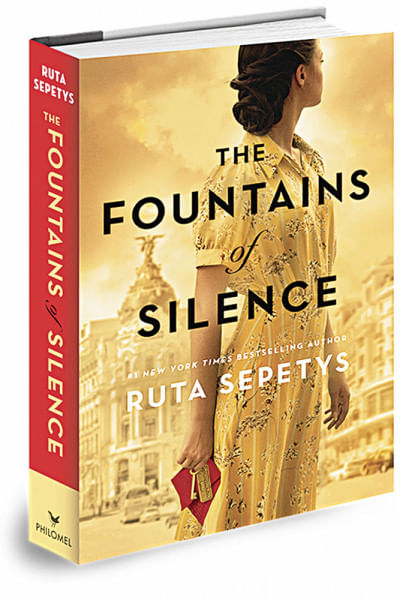The Glamour and Darkness of the Spanish Dictatorship

Ruta Sepetys's The Fountains of Silence (Penguin Books, 2019) takes place in the 1950s, in a Spain reigned by fear and stifling laws, caught between the dichotomy of non-existent human rights on the one side, and a flourishing tourist scene and wealthy visitors wooed by the national regime on the other. The glamour is only for the powerful to enjoy, while the poor are still reeling from the Spanish Civil War.
The novel follows the story of Daniel, the 18-year-old son of an American oil tycoon visiting Spain with his family, and Ana, a young woman working as a hotel maid where Daniel is staying, set against the backdrop of a Spain with dangers and secrets lurking on every corner. At the forefront of this story is the Castallana, a palace-turned-hotel in Madrid that caters mainly to Americans. It is the symbol of the new Spain that Franco wants to project to the world. While the guests on the upper levels of the Castallana enjoy scrumptious lobsters, the staff who do their bidding are relegated to the basements, earning less than what a lobster would cost. Amidst this turmoil, Daniel is hoping to capture a photograph that will win him a contest and pay for his way through journalism school. While his initial motivations for capturing Spain's atrocities are selfish, they soon change due to his growing friendship with Ana and fellow photojournalist Nick. Ana had academician parents who were executed for having supported the republican government. She is left living hand to mouth to fend off debts and dreams of leaving the country someday.
Although centered around a romance between Daniel and Ana—he fascinated by her beauty and guarded nature, she by his Texan charm and goodness—the book goes beyond the confines of the hotel. We are taken to the dilapidated Vallecas—home to the working class, cobblestone streets smothered by the Guardia Civil, dark and eerie cemeteries, bloody bullfights, dingy orphanages, and the prowling Spanish police fittingly referred to as "crows". Here, the story boasts of a multitude of characters and their points of view.
The portrayal of these contrasting facets of a dictatorship is raw and striking, even though the alternating narrators can feel disorienting initially. These working-class Spanish locals have given up fighting for their cause, reduced to fighting for their livelihood. There is a clear resignation to and acceptance of the new normal of dictatorship, similar to the dictatorships and faux-democracies across the world at present. It seems that the passage of time has had no impact on the workings of the world.
Nothing, however, could have prepared me for the darkest and most horrifying aspect of the Spanish rule portrayed in the novel—the stolen children. Through the biased eyes of Puri, Ana's cousin who works as a nurse at an orphanage, author Sepetys very cleverly unfurls the terrifying phenomenon of infants being stolen and sold to the "right parents", while the birth parents with the wrong political and religious affiliations are informed that their babies died in birth. They stay silent because speaking up is the biggest crime in Francoist Spain.
Through these stories, Sepetys succeeds in creating an environment of fear, uncertainty, and even mystery throughout the book. However, her pacing can be slow and she heavily underestimates her readers by repeating details and leaving all-too-obvious hints for them to catch on to. This lack of nuance takes away from the pleasure of reading. The sudden climax also catches one off guard.
When a story and its characters slowly sneak into your heart, fascinating you with the research that went into it and haunting you with the images they evoke, the disappointment of such shortcomings is multiplied, because the novel was that close to being a perfect read.
Towrin Zaman is a research associate who loves writing in her spare time.

 For all latest news, follow The Daily Star's Google News channel.
For all latest news, follow The Daily Star's Google News channel. 



Comments